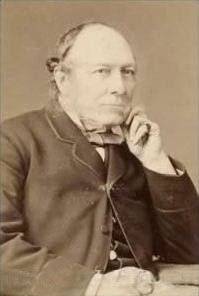Died 8 May 1887Edinburgh | Occupation Lighthouse engineer Alma mater Edinburgh University Name Thomas Stevenson | |
 | ||
Employer | ||
145 thomas stevenson vs brady berge
Thomas Stevenson (22 July 1818 – 8 May 1887) was a pioneering Scottish lighthouse designer and meteorologist, who designed over thirty lighthouses in and around Scotland, as well as the Stevenson screen used in meteorology. His designs, celebrated as ground breaking, ushered in a new era of lighthouse creation.
Contents
- 145 thomas stevenson vs brady berge
- Dumbo arts festival 2014 thomas stevenson disco transformer
- Background
- References
He served as president of the Royal Scottish Society of Arts (1859–60), as president of the Royal Society of Edinburgh (1884-86), and was a co-founder of the Scottish Meteorological Society.
Dumbo arts festival 2014 thomas stevenson disco transformer
Background
The youngest son of engineer Robert Stevenson, and brother of the lighthouse engineers Alan and David Stevenson, between 1854 and 1886 he designed many lighthouses, with his brother David, and then with David's son David Alan Stevenson. His wife's younger brother, James Melville Balfour, trained under D. & T. Stevenson and then emigrated to New Zealand, where he was first the marine engineer for Otago Province before he appointed Colonial Marine Engineer.
He married Margaret Isabella "Maggie" Balfour in 1848 and their son was the writer Robert Louis Stevenson, who caused him much disappointment by failing to follow the engineering interests of his family.
Thomas Stevenson was a devout and regular attender at St. Stephen's Church in St Stephen's Place, Silvermills, at the north end of St Vincent Street, Edinburgh.
He was involved in regrettable efforts to rubbish the inventions of John Richardson Wigham.
In 1869, as a successful experiment into using the newly invented electric light for lighthouses, Stevenson had an underwater cable installed from the eastern part of Granton Harbour, and a light on the end of the Trinity Chain Pier was controlled from half a mile away by an operator on the harbour.
He examined wind and wave effects, and his analysis is the first quantitative discussion of wave height as a (square root) function of fetch. His paper is one of the first quantitative studies of windspeeds in the planetary boundary layer. Motivated by practical applications, these are fundamental contributions. He designed the Stevenson screen as a shelter to shield meteorological instruments, and this has been widely adopted.
He died in Edinburgh and is buried in the Stevenson family plot in New Calton Cemetery.
